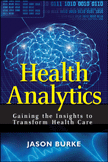Health reform incentives for the adoption of electronic medical records (EMRs) have created a watershed event for business analytics. Whereas hospital EMR adoption was a paltry 12% less than 4 years ago, today more than 6,000 hospitals and 390,000 providers are participating. Combined with Medicare/Medicaid incentives that require shared data and insights, health care is now crossing the electronic data Rubicon.
In many ways, EMR adoption today looks like the enterprise resource planning (ERP) proliferation of prior decades: broad scopes, huge budgets, high risks, and scarce skillsets. No one was talking about business analytics back then -- at least, not at first. But after all of the “top 10 vendor” lists were compiled and the consultants went home, we learned that the value in ERP was not paperwork reduction per se -- it's in automation and insights.
Fast forward to 2013, and health transformation barriers are more structural and cultural than technical. Yes, there are challenges in topics like enterprise architecture and data. But the real barriers are more fundamental. Neither care volume nor cost is equivalent to care value. And as many physicians will readily attest, care quality and outcomes are not really about compliance with standardized practices (though those can help). So how can we get to a sustainable health delivery model?
Analytics can uncover both the factors and interdependencies that truly determine health outcomes and costs. But we have a lot of work to do, and it probably starts with education. Health care still uses terms like “predictive analytics” to describe math that is neither predictive nor particularly analytical. Counts and averages of population conditions and costs are fine. But if our goals are transformational -- the creation of a patient-centric, value-based, learning health system -- then we need better, forward-looking intelligence at the level of individual patients. After all, much of health care is about risk management, and risk assessments of any type -- health risk, readmission risk, safety risk -- should reflect the unique characteristics associated with the person and situation being assessed if they are to be effective and meaningful.
Hopefully the current trends in "population health" prevalent in patient-centered medical homes (PCMHs) and accountable care organizations (ACOs) will bring a new era of insights sensitive to all population sizes (including one). But the keys to transformation will probably not be found in EMRs or web-based reporting; they will more likely be found in individuals asking well-formed questions and gaining prospective, actionable insights. Just as the advent of antibiotics offered a repeatable treatment model for many infectious diseases, analytics offer proven, repeatable models for improving efficacy, enhancing quality, optimizing behavior, managing risks, and controlling costs. We just have to start cultivating these health analytics therapies.
Jason Burke is the author of the new book Health Analytics: Gaining the Insights to Transform Health Care. Read more about Jason and his work here.
